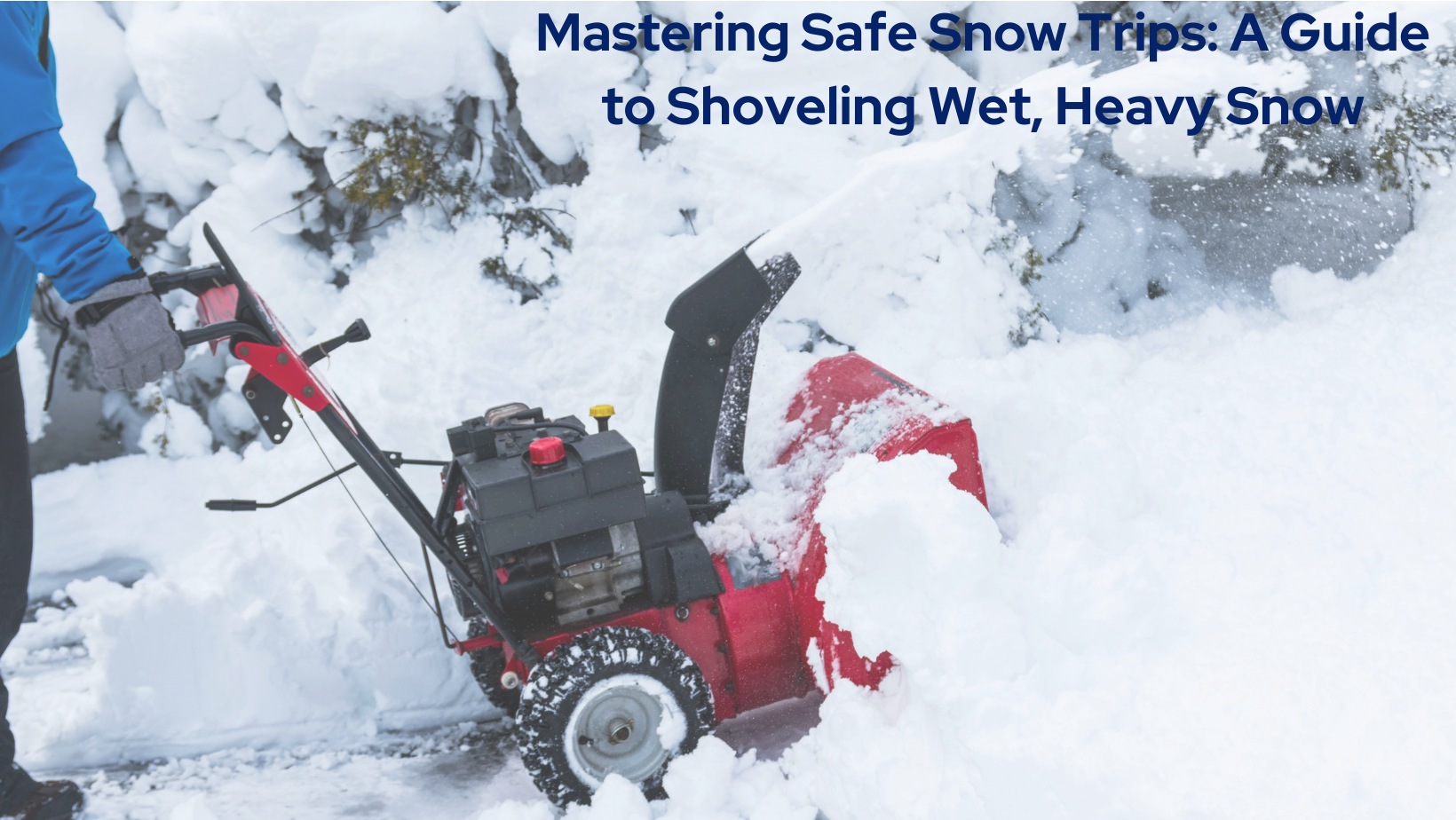 Winter brings its own set of challenges, especially when it comes to dealing with wet and heavy snow. Shoveling may seem like a routine task, but it’s crucial to approach it with caution to avoid injuries and ensure a safe winter season. In this blog, we’ll explore some essential tips for mastering safe snow trips, specifically when dealing with the burdensome nature of wet and heavy snow.
Winter brings its own set of challenges, especially when it comes to dealing with wet and heavy snow. Shoveling may seem like a routine task, but it’s crucial to approach it with caution to avoid injuries and ensure a safe winter season. In this blog, we’ll explore some essential tips for mastering safe snow trips, specifically when dealing with the burdensome nature of wet and heavy snow.
**1. Choose the Right Equipment:**
Investing in the right snow shoveling equipment can make a significant difference. Opt for a sturdy, ergonomic snow shovel with a curved handle and a non-stick blade to make the task more manageable. Additionally, consider using an ice melt or sand to prevent slippery surfaces.
**2. Dress Appropriately:**
Wear layers to stay warm but make sure your clothing doesn’t restrict your movement. Waterproof and insulated gloves will protect your hands from the cold, wet snow. Don’t forget a hat and waterproof boots with good traction to prevent slips.
**3. Warm-Up Before Shoveling:**
Shoveling heavy snow is a demanding physical activity. Take a few minutes to warm up your muscles before starting. Simple stretches for your back, arms, and legs can help prevent strains and injuries.
**4. Pace Yourself:**
Shoveling heavy snow requires both strength and endurance. Take breaks to avoid overexertion, and listen to your body. If you start feeling fatigued, pause for a moment, hydrate, and resume when you feel ready.
**5. Lift with Your Legs:**
One of the most common causes of snow shoveling injuries is improper lifting technique. Bend at the knees, not at the waist, and use your leg muscles to lift the snow. Keep the shovel close to your body to minimize strain on your back.
**6. Push, Don’t Lift:**
Whenever possible, push the snow rather than lifting it. Pushing is less strenuous on your back and puts less pressure on your heart. Save lifting for smaller amounts of snow, and use a smaller shovel if needed.
**7. Stay Hydrated:**
Even in colder temperatures, it’s crucial to stay hydrated. Shoveling snow is a workout, and staying hydrated helps maintain your energy levels and overall well-being.
**8. Be Mindful of Heart Health:**
Shoveling heavy snow can be strenuous on the heart. If you have a history of heart problems or are not accustomed to rigorous physical activity, consult with your doctor before tackling the snow.
**9. Ask for Help:**
If the snow is particularly wet and heavy, consider asking for help. Enlist the assistance of neighbors or family members to share the workload and make the task more manageable.
Shoveling wet, heavy snow doesn’t have to be a daunting task. By following these safety tips, you can ensure a successful and injury-free snow removal experience. Remember, taking a proactive and cautious approach is key to enjoying a safe winter season. Stay warm, stay safe, and embrace the beauty of winter! ❄️🌨️


 Facebook
Facebook
 X
X
 Pinterest
Pinterest
 Copy Link
Copy Link